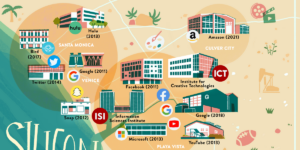R&D Magazine’s Magazine 40-year old tradition of honoring each year’s hundred best contributions to technology this year embraces the Globus Toolkit Grid Middleware co-developed by the University of Southern California and Argonne National Laboratory.
Carl Kesselman of the USC School of Engineering Information Sciences Institute collaborated with Argonne’s Ian Foster to create the Globus Project and the Toolkit. Kesselman, who is director of ISI’s Center for Grid Technologies, also holds an appointment as a professor in the department of computer science.The Globus Project has since 1996 developed fundamental technologies needed to build computational grids. Grids are persistent environments that enable software applications to integrate instruments, displays, computational and information resources that are managed by diverse organizations in widespread locations. For this year’s R&D 100 award, the Globus Toolkit won in addtiion to inclusion in the select hundred inventions, a special Editor’s Choice Award for “Most Promising New Technology.”
Since its inception, the project has been dedicated to the open-source philosophy of sharing resources to maximize progress and community benefits. The toolkit — which includes software services and libraries for resource monitoring, discovery, and management, plus security and file management — is now central to science and engineering projects that total nearly a half-billion dollars internationally, and it is the substrate on which many companies are building significant commercial Grid products.
” The number of companies using Grid computing technologies is expected to grow from less than 1% now to 10% by 2005 (40% of large companies could be using Grid technologies by 2005).” said the R&D magazine story describing the technology.
RD100 Awards were established in 1963, honoring the achievements of the previous year. Successful entries are now submitted by an international range of organizations, including universities, private corporations, and government labs. In years past, the R&D 100 Awards have recognized many winning products that later became household names, including Polacolor film (1963), the flashcube (1965), the automated teller machine (1973), the halogen lamp (1974), the fax machine (1975), the liquid crystal display (1980), the printer (1986), the Kodak Photo CD (1991), the Nicoderm antismoking patch (1992), Taxol anticancer drug (1993), lab on a chip (1996), and HDTV (1998).
Published on September 26th, 2002
Last updated on August 10th, 2021












